Infected Acne
By Abby Vinas
Types of Acne
•
0 Comments
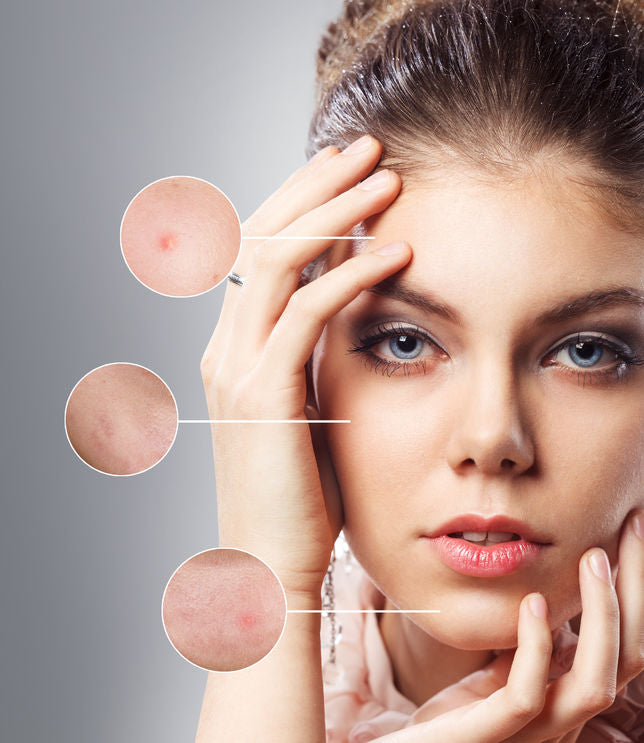
What Should I Do if My Acne is Infected?
Most experience a breakout at one point or another in their life. The reality of acne is harsh for many to accept, and there are many people still who suffer from acne breakouts throughout their lives. Fortunately, there are treatments available that can soothe and prevent further breakouts.
In severe cases, acne can become a more serious problem. Acne lesions can become inflamed or worse—infected. While this is an uncommon occurrence, the inflammation can lead to an infection that can become unsightly, painful, and even harmful to your overall health. These infections may be uncommon, but they can arise from a variety of circumstances including environment and genetics. Unfortunately, some people are more prone to skin infections than others.
A hard lump beneath the skin can cause alarm; after all, lumps have been associated with tumors and cancer. However, a lump beneath the skin could simply signify an infection from an acne lesion. Of course, if you feel any abnormality that persists over time, you should consult a doctor as soon as possible. Sarah Taylor, MD with Wake Forest Baptist Health states the prescription world has really changed in the past 10 years or so and dermatologists are much better medically equipped to deal with all different types of acne.
Before you do, however, it may be wise to consider your options. That strange bump that has grown beneath your skin may be an infection, and if it is, it can be treated accordingly with antibiotics, other treatments, and preventative measures. If you are concerned about the presence of infected acne on your skin, here are the main types of blemishes and lesions and their respective treatment options.
Types of Infections
Generally, there are two types of infections: cystic acne, and acne caused by a staph infection. Both are characterized by painful, swollen, red lesions and these marks can cause great distress.
- Cystic Infections
There are many kinds of cysts, and these are more common than staph infection breakouts. The University of Michigan Health Services warns that in severe cases of acne, cysts develop and without proper treatment they may increase the likelihood of scarring. Sebaceous cysts are called so because the sebaceous gland becomes irritated and infected. The sebaceous gland is a gland beneath the skin that is responsible for lubricating the skin with an oily matter called sebum that seeps through the hair follicles. Sebum is the substance that keeps skin moist and keeps your scalp hydrated.
 There are cases, however, in which the cyst itself can become inflamed and infected. This is when you might notice that the sebaceous cyst has become sore and irritated. Pay close attention to the site of the cyst; they will most often appear in areas that are consistently irritated by an object, such as behind the ear where hair is pushed back, or on the neck where a collar may consistently rub it. It is important to know that a sebaceous cyst is caused by an infection of the sebaceous gland itself.
There are cases, however, in which the cyst itself can become inflamed and infected. This is when you might notice that the sebaceous cyst has become sore and irritated. Pay close attention to the site of the cyst; they will most often appear in areas that are consistently irritated by an object, such as behind the ear where hair is pushed back, or on the neck where a collar may consistently rub it. It is important to know that a sebaceous cyst is caused by an infection of the sebaceous gland itself.
There are other types of cysts. An epidermoid can occur in the same regions of the body as a sebaceous cyst, and may erupt on the skin. An epidermoid cyst is made out of keratin and fat, and will swell around the hair follicle-not in the sebaceous gland. It too is harmless.
Ingrown hairs can also cause a great deal of pain and irritation. People who are prone to ingrown hairs typically have thick, dense or curly hair; ingrown hairs occur in areas where this hair is most prevalent. This may include the face, neck, chest, and back in addition to the groin region.
 Pilonidal cysts may be the most atypical of them all. A pilonidal cyst appears at the base of the tailbone. As you might imagine, sitting on a pilonidal cyst is not a comfortable experience. It can feel like a hard, painful bump when you sit and you may even feel it when you walk. Generally, people who sit or bike a lot may develop this type of cyst. During World War II, soldiers called it the “Jeep Disease” because it was associated with the long bumpy rides soldiers took on Jeeps. This type of cyst infection can even cause fevers.
Pilonidal cysts may be the most atypical of them all. A pilonidal cyst appears at the base of the tailbone. As you might imagine, sitting on a pilonidal cyst is not a comfortable experience. It can feel like a hard, painful bump when you sit and you may even feel it when you walk. Generally, people who sit or bike a lot may develop this type of cyst. During World War II, soldiers called it the “Jeep Disease” because it was associated with the long bumpy rides soldiers took on Jeeps. This type of cyst infection can even cause fevers.
If you experience any of the following symptoms, it is possible you have a cyst and should treat it accordingly. Keep the area clean and take a pain reliever if necessary it grows too large or doesn’t disappear, seek a doctor’s help and they may lance it and drain the puss for you. Your doctor may also prescribe antibiotics and test for hormonal issues. If the issue is much deeper, surgery may be required.
- Staph Infection
Staph infections are another matter. If you have a staph infection, you should seek treatment right away. Cedars Sinai notes that if they get into the bloodstream, bones, joints, or organs, the infections become far more serious.
A staph infection is caused by a naturally occurring bacteria called staphylococcus that resides on the skin and inside the nose. This infection is highly contagious and has the potential to be life-threatening. In this case, the raised bumps are not pimples, but inflammation caused by staph, although the lesions may still create puss.
Because it is highly contagious, a staph infection can be contracted anywhere. Hospital staff can contract it due to close proximity with patients, however, you can also contract it from unsanitary hot spots like gyms, which are generally crawling with bacteria. This type of acne will give off heat and appear bright red.
If your infection doesn’t respond to typical medications, your dermatologist will take a skin culture to determine if you have a staph infection. If you do, he or she will prescribe antibiotics and your cyst will usually be drained.
How to Prevent Acne Infections
There are many treatments that may help prevent acne infections, and they are surprisingly simple.
- 1. Exfoliating. If you have certain types of cysts where your skin is thicker—such as your back, neck, and chest—an exfoliate may help. Epidermoid cysts occur when skin cells build up, and exfoliating can help clear the buildup away. Exfoliates can also help clear ingrown hairs.
-
![]() 2. Wear Breathable Clothes. Synthetic fabrics like those used in gym clothes can actually reduce breathability, and when worn too often, cause skin infections. Be sure to wash your gym clothes after every use to prevent infection.
2. Wear Breathable Clothes. Synthetic fabrics like those used in gym clothes can actually reduce breathability, and when worn too often, cause skin infections. Be sure to wash your gym clothes after every use to prevent infection. - 3. Wash Your Bedsheets and Clothes. Your bedsheets contain a buildup of oil, dead skin and bacteria from your body, so you should wash your sheets at least once a week. In addition, wash underclothes such as bras regularly and alternate between outfits that will give your skin breathability.
- 4. Shave Properly. Infections caused by ingrown hairs can be prevented with proper shaving methods. Shave with the grain of hair growth to prevent irritation. If you find shaving results in ingrown hairs, consider waxing or laser hair removal.
Conclusion
Acne infections can be painful, irritating, and sometimes even dangerous. However, proper treatment from a dermatologist can eliminate those harsh bumps. Prevent infection by practicing proper hygiene and exfoliating, and trust your doctor to prescribe helpful antibiotics and provide acne prevention tips.

Abby Vinas
Abby Vinas has long been an active member of the holistic health community, advocating in favor of its benefits to both our physical and emotional well-being. Her commitment to leading a healthy lifestyle has made her an authority on self-care practices. Abby is passionate about fitness, nutrition, and proper skincare, and is also an avid lover of avocado toast and dog-petting.
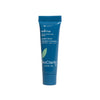
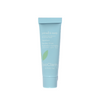
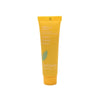
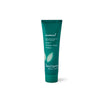








 2. Wear Breathable Clothes. Synthetic fabrics like those used in gym clothes can actually reduce breathability, and when worn too often, cause skin infections. Be sure to wash your gym clothes after every use to prevent infection.
2. Wear Breathable Clothes. Synthetic fabrics like those used in gym clothes can actually reduce breathability, and when worn too often, cause skin infections. Be sure to wash your gym clothes after every use to prevent infection.